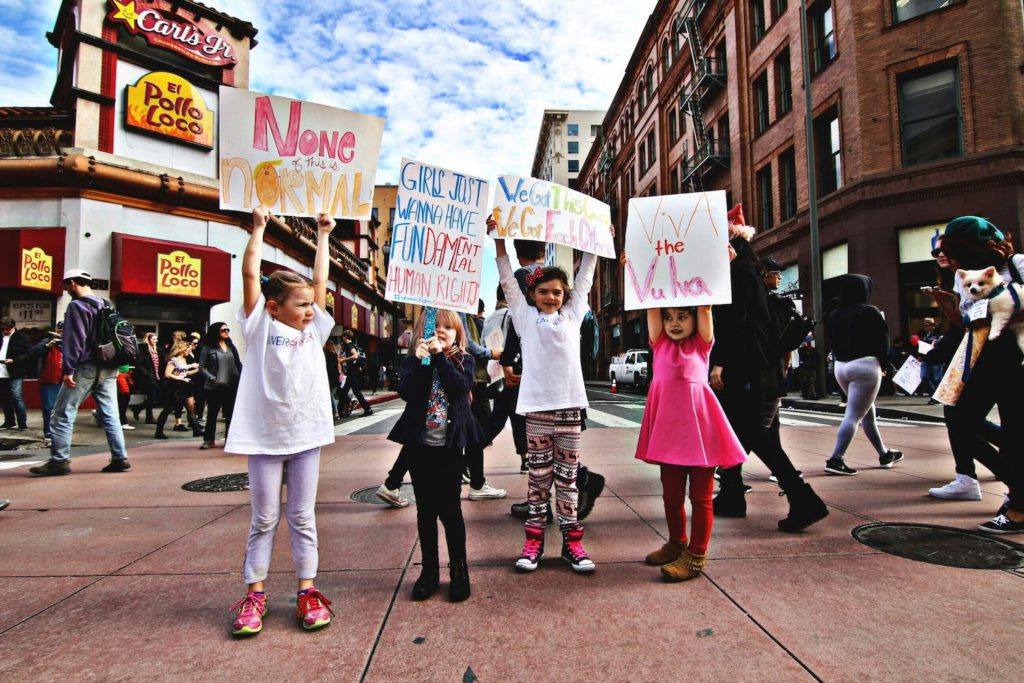Introduction
The impact of the jurisprudence of the European Court of Human Rights (European Court) on the Inter-American Court of Human Rights (Inter-American Court) has been historically significant, as it has been included in its argumentation on various subjects. Although there has been a greater jurisprudential flow between both courts in recent years, references to the Inter-American Court by the European Court are still scarce, and this scarcity is evident regarding standards related to women’s rights. Specifically, the Inter-American Court has widely developed an intersectional approach, which plays an important role in its argumentation. Therefore, it is worth considering the possibility of a greater reception of inter-American standards by the European Court, enabling the development of arguments that incorporate the necessary intersectional approach to better protect the rights of women and girls.
Judgments
The intersectional approach in the European and inter-American regional human rights systems differs quite a bit. While the former does not expressly refer to the concept of intersectionality, at least under the lens of the majority of the judges, the latter has explicitly introduced this concept since González Lluy et al. v. Ecuador (2015) about a three-year-old girl infected with HIV after receiving a blood transfusion. In the case, the Inter-American Court recognises “that, in Talía’s case, numerous factors of vulnerability and risk of discrimination intersected that were associated with her condition as a minor, a female, a person living in poverty, and a person living with HIV. The discrimination experienced by Talía was caused not only by numerous factors but also arose from a specific form of discrimination that resulted from the intersection of those factors; in other words, if one of those factors had not existed, the discrimination would have been different” (§290). The Inter-American Court has understood that the intersection of various categories of discrimination prohibited by the American Convention on Human Rights can deepen the experiences of discrimination faced by women and girls.
In this post, I will focus on two cases of sexual violence against girls in the family sphere: V.R.P., V.P.C. and others v. Nicaragua (2018) before the Inter-American Court and R.B. v. Estonia (2021) before the European Court.
The V.R.P., V.P.C. and others v. Nicaragua case refers to the rape and sexual abuse of an 8-year-old girl by her father and the lack of state response to investigate and prosecute within a reasonable period and without re-victimisation. On the other hand, the case R.B. v. Estonia before the European Court deals with the rape and sexual abuse of a 4-and-a-half-year-old girl by her father and the subsequent testimony of the victim without complying with the procedural rules in force in Estonia, rules also applicable to the testimony of children. This omission resulted in the Estonian Supreme Court declaring the girl’s testimony inadmissible and the acquittal of the accused as it was decisive evidence in the case.
In the case of V.R.P., V.P.C. and others v. Nicaragua, the Inter-American Court highlights from the beginning the intersectional discrimination that affected the girl and emphasised that sexual violence is a form of discrimination against women (§290). The intersectional approach is applied transversally throughout the sentence, not as a complementary argument or a mere sum of discriminatory factors, but as a central one. The application of this approach is clear when it states that “the Court will adopt an intersectional approach that takes into account the age and gender of the child.” (§154)
Gender and age are taken into account in the Court’s argument to develop the standard of protection of the rights of girls victims of sexual violence by combining international instruments on the rights of children and international instruments on violence against women (§155), among others, the Convention on the Elimination of All Forms of Discrimination against Women and the Convention on the Rights of the Child. This is where the intersectional approach becomes most relevant in the ruling. As a result, a reinforced state obligation to due diligence in the investigation of acts of sexual violence and the adoption of specific protection measures, these must be “extreme” when the case refers to the sexual violation of a girl, applying a gender and childhood perspective (§292). The court recognises the special vulnerability of girls to having their human rights violated and highlights the historical discrimination to which both women and girls are subject, which leads to high rates of sexual violence against them, especially in the family space (§ 156). The Inter-American Court takes the context of historical discrimination against women and girls and does not see the case as an isolated event, as is evident from the various collective reparation measures ordered. In short, the opening of the Inter-American Court to international human rights standards intensifies the protection of marginalised groups and allows the decreed state obligations to be given content and scope. This opening was possible in the specific case thanks to the Court’s intersectional perspective. Recently, in the case of Ángulo Losada v. Bolivia (2022) on a 16-year-old adolescent victim of sexual violence by a family member, the Court reiterated the intersectional approach, through an argument that once again combines international standards on the protection of children and the international instruments regarding violence against women (§99) and even develops the standard on consent taking M.C. v. Bulgaria before the European Court as a reference (§139).
By contrast, in R.B. v. Estonia before the European Court, the gender of the victim is invisible throughout the entire judgment. The European Court refers to the girl as a “young child” and because of this applies international standards that refer only to children, and not to women. In that sense, there are two aspects to highlight in the ruling. First, the incorporation in the European Court’s argument of international standards for the protection of the rights of children, such as the United Nations Convention on the Rights of the Child, the Council of Europe Convention on the Protection of Children against Sexual Exploitation and Sexual Abuse and European Union directives. These standards focus mainly on guaranteeing the testimony of children victims of sexual violence, taking into consideration the “best interest and rights of the child” and avoiding revictimisation (§84,88,99). Second, the European Court highlights the importance of differentiated procedural rules that consider the “particular vulnerability” of the victim as a “young child” prioritising the “best interest of the child” (§87 and 103). The first argument becomes insufficient if an essential aspect is not made visible: that the victim was a girl, that her voice was excluded by the judicial authorities and that in Estonia there is a particular context of violence against women where complaints of these cases are still far below reality (GREVIO, 2022; CEDAW/C/EST/CO/5-6). On the other hand, the mention of the particular vulnerability of the victim shows that the European Court at least recognises the differentiated impact of sexual violence concerning children, but not for girls. The Court’s one-dimensional analysis and the lack of an intersectional perspective limited the development of standards for reinforced protection of girls victims of violence and the possible establishment of procedural rules that look at the specificities of violence for women and girls, making visible their experiences and avoiding revictimisation. In this regard, even though the European Court determines that there were “significant flaws in the domestic authorities’ procedural response to the applicant’s allegation of rape and sexual abuse by her father” (§102) and recognises “the strict application of procedural rules which made “no distinction between adults and children” (§102) does not end up framing the case as discrimination. Although the applicant does not allege a violation of Article 14 of the European Convention, the Court could have invoked this article through the iura novit curia principle, as it had already done in previous cases. This principle translated into English means that “the court knows the law”, so rights contained in the convention and that have not necessarily been alleged by the parties can be invoked by the court. The European Court ignores discrimination and with it the intersection of vulnerabilities that could have been made visible if a gender and intersectional perspective had been mediated. The differentiated impact of sexual violence against women and girls is disregarded by the European Court.
Conclusion
The incorporation of an intersectional approach in the arguments of regional human rights courts is a necessary analytical tool that makes visible the differentiated experiences that violence has on women and girls, and the necessary reinforcement of the obligation of state protection towards them, especially in the investigation of these events. With this, openness to international normative standards that enrich the argumentation and expand the vision of the courts to support the content and scope of state obligations is important in the adjudication of rights. It also allows us to insist on the importance of bringing to the centre realities that go unnoticed because they are subsumed in generalisation, excluding the particularities of violence against women and girls and, in turn, the heterogeneity of their experiences as various forms of discrimination against them come together.
Although the intersectional lens in the jurisprudence of the Inter-American Court has not been uniform, its transformative potential has been present in two main aspects. First, in reinforcing positive state obligations concerning marginalised groups and second, in reparation measures. We see the latter also in the case of V.R.P., V.P.C. and others v. Nicaragua where the court orders to adopt and implement permanent training programs and courses for public officials “taught from a gender perspective, based on the protection of children.” (§392). These are two aspects that the European Court could consider for a robust understanding of the protection of the rights of people facing intersectional discrimination, if it decides to adopt an intersectional perspective.
In 2018, the first Dialogue between Regional Human Rights Courts took place to strengthen the interaction and cooperation between the three courts. In their most recent declaration they have reaffirmed their “commitment to contribute to a permanent dialogue”. In that sense, it is necessary that this institutional commitment continues to be strengthened and transcends towards a transformative proposal of mutual jurisprudential influence that reinforces the protection of rights, especially of women, girls and marginalised groups.


